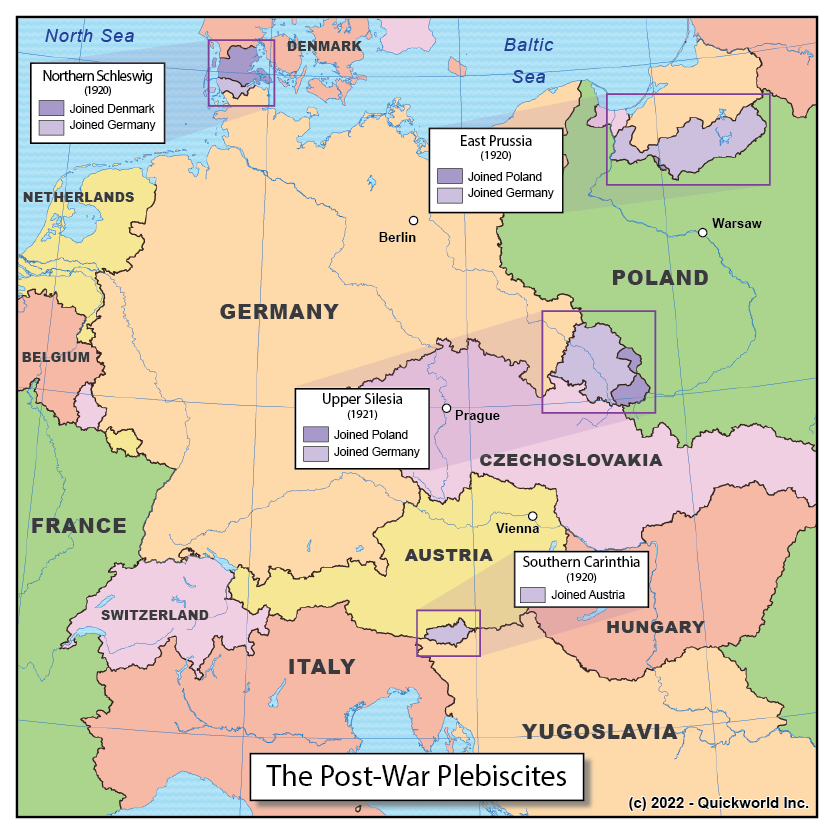One of the major concepts to come out of the Post-WW1 world order was the idea of nations rights to self-determination. This lofty ideal is in reality very difficult to enforce, because what constitutes a nation is a matter of great debate.
The Paris Peace Conference established new countries, such as Czechoslovakia and German Austria, reinstated old nation states such as Hungary and Poland, and dealt with a large amount of territorial disputes that the warring nations had been trying to resolve by force. While many controversial transfers of territory were done by fiat of the victors, a number of border regions were offered to choose their own destiny through a League of Nations organized plebiscite. Those were:
- Northern Schleswig, between Denmark and Germany, which split about two-thirds for Denmark and one third for Germany,
- Upper Silesia, between Germany and Poland, which split about 80% for Germany and 20% for Poland,
- Southeastern Carinthia, between Austria and Yugoslavia, which chose to be Austrian,
- Southeastern Prussia, between Germany and Poland, which mostly chose to be German, though some villages elected to join Poland.


